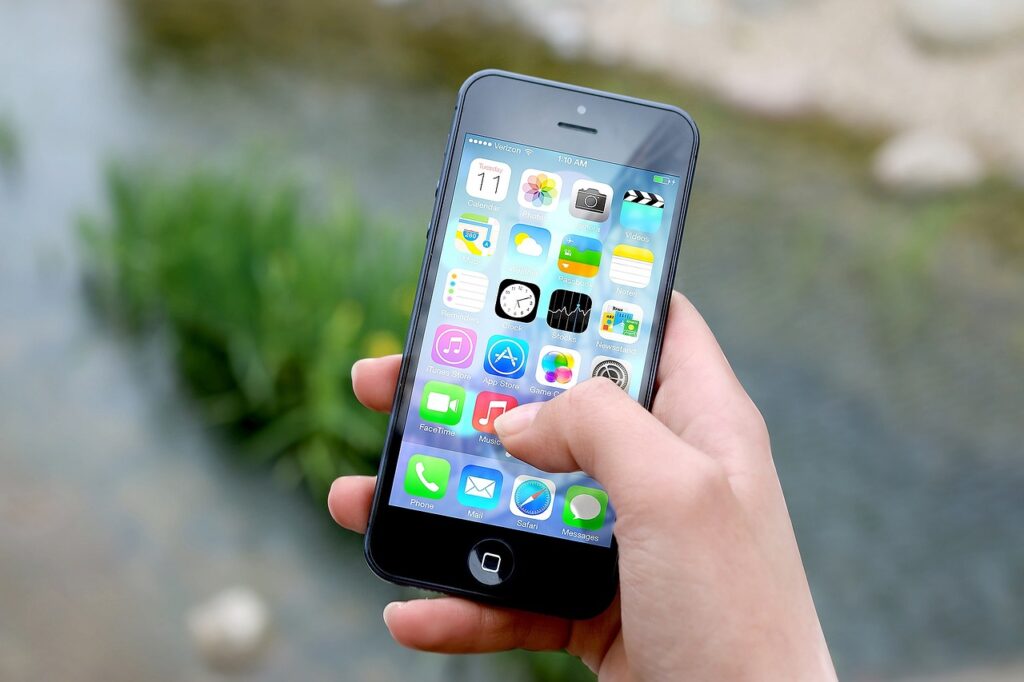
Phones have helped make people’s lives easier and better. There are even apps on weather, news, and maps. Technology has also made phones even better, like how phones can zoom in pretty far. But what was the first smartphone like? And how did it evolve? To find the answers that we need, let’s dive deeper into the history and evolution of smartphones.
1973 – The First Cell Phone “The Brick”
It all started in 1973, when Martin Cooper invented the first cell phone, “The Brick”. The phone was originally produced to help doctors and hospital staff improve their communication, but the rich bought it so it was considered luxury in the 80’s.
Martin Cooper (byname Marty Cooper) is an American Motorola Engineer, born on December 26,1928, Chicago, Illinois, U.S. He joined the U.S Navy and served during the Korean War.
The first prototype of the phone was born in 1973. It weighed 2 kilos and with a battery 5 times heavier than the entire phone. The battery life of the phone is only 20 minutes, but he said that it’s okay for the battery life to be short since you can’t hold it that long. It was like a walkie-talkie since it was only used for voice calls. The production of the phone costs $10,000 each, which is one million dollars in today’s money. It was also the first cell phone to be approved by the Federal Communication Commission.
Martin Cooper also made a portable version which costs $4,000 each, which is $10,000 each in today’s money.
While making the phone, he said his team was challenged to fit thousands of parts in one phone for the first time. “The industrial designers did a superb job,” he said “but by the time the engineers got done we ended up with two and a half pounds.” He said that the next challenge was to create the network with the promise at that time that we only needed three megahertz of spectrum, the equivalent of five TV channels to cover the world.
1991 – Lithium-ion Batteries
The battery of the “Brick” wasn’t only heavy but had little battery life, so a lightweight and rechargeable lithium-ion battery was invented. The first one was commercialized by Sony and engineer Asahi Kasei in 1991, and it is still used today. But he wasn’t the one who first made the lithium-ion battery.
The first person to experiment with finding this battery was Stanly Whittingham in the 1970’s during the oil crisis. Stanley was an English chemist working for Exxon mobile at the time and was exploring the idea of a new battery that could recharge on its own. His first experiment was caught on fire so the experiment was halted.
John B. Goodenough had an idea and continued what Stanly started but swapped the materials. Goodenough was head of the Inorganic Chemistry Laboratory at University of Oxford. His experiment was a success and it doubled the battery’s energy potential.
But five years later, professor Akira Yoshino at Meijo University in Nagoya, Japan, also swapped the materials. The experiment was a success leading to the battery to be safer and more stable.
In 2019 the Nobel Prize in Chemistry was awarded to John B. Goodenough, M. Stanley Whittingham and Akira Yoshino for contributing to the making of the lithium-ion battery.
1994 – The First “Smartphone” Announced
Simon was the first “smartphone” announced in 1994, created by Frank J. Canova and was produced to have a “computer that could fit in your shirt pocket”. Canova was born on December 23, 1956 in Wilmington, Delawarean, he is an American electronics engineer who works at IBM (International Business Machines Corporation). It was created since IBM wanted a “computer that could fit in your shirt pocket”.
The phone’s name was Simon Personal Communicator, named by BellSouth team, or Simon for short, codename “sweetspot”. The name was derived from the children’s game “Simon Says”. The phone was characterized by a combination of a PDA (Personal Digital Assistant) and a mobile phone when it launched. The phone can communicate via cellular network.
For producing the phone, IBM wanted Motorola to be their manufacturing partner but they were declined since Motorola thought that IBM might become a competitor in the phone market. So IBM made a deal at Mitsubishi Electric to be their manufacturing partner.
1999 – First Front Facing Camera Phone
Cameras were one thing back then, but is there a smartphone with a camera? Meet the first ever front-facing camera phone, Kyocera VP-210, made by Kyocera Fineceramics GmbH, in Japan, in 1999 and released in May 1999.
The phone weighed 155 grams and its size was almost the same as modern phones. It had a single 110,000-pixel front-facing camera to send two photos per second via Japan’s PHS mobile phone network system with a capacity of 20 JPEG (Joint Photographic Experts Group). It can also take videos of only two frames per second (FPS). The phone costs $325, which is $589 in today’s money.
2000 – First Back Facing Camera Phone
If there was a front facing camera phone, then there was now the back facing camera phone. Made by Sharp Corporation is Sharp J-SH04, the first ever back facing camera phone. Released in November 2000, this phone is the first cellular mobile phone to fully integrate a camera with its telephone function. It has a poor picture resolution of 110,000 pixels, but it can instantly transmit photos using the carrier network.
2007 – First iPhone
Steve Jobs was worried the phone makers would soon overthrow his iPod so he created the iPhone. The first one was announced on January 9 2007 by Steve Jobs, and released on June 29 2007.
It had 2 megapixel cameras and a 3.5 inch diagonal screen. It was the first model that had a touch screen, had a GPS, camera, iPod, and internet access. The 4GB version cost $499 while the 5GB version cost $599.
2008 – First Android Phone
Google bought Android back in 2005, and the original founders wanted a “smarter mobile devices that are more aware of its owner’s location and preferences.” So the T-Mobile G1, also known as HTC Dream (codename “sooner”), was born and it was the first android phone.
It had a camera, a small QWERTY keyboard, also touch screen, and had a BlackBerry-style trackball to help navigate. It launched on September 23 2008 and cost $179.
Conclusion
Smartphones have really come a long way. From phone calls to now video calls and even accommodating video games. From big smartphones to now small ones that can fit in anyone’s pockets. And as future generations pass by, phones will continue to evolve. Truly this has got to be one of mankind’s greatest inventions.

